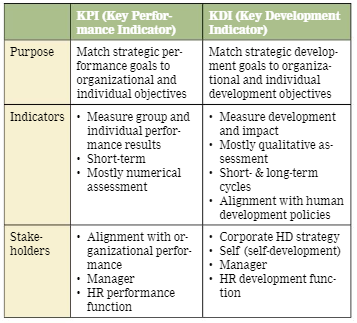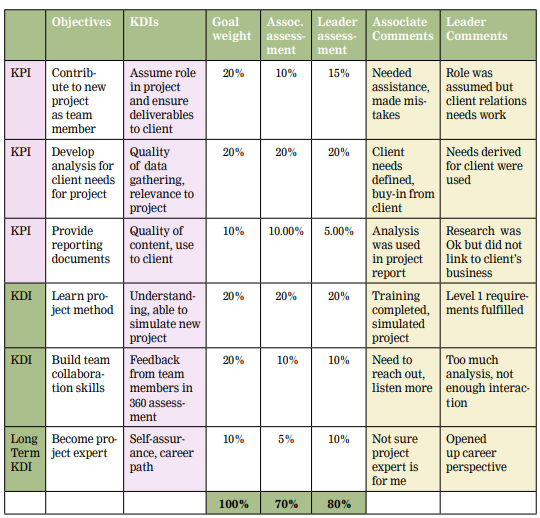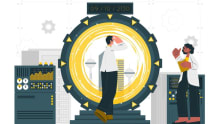How KDIs measure beyond performance

Key performance indicators (KPIs) are a staple of many performance management systems, but are they sufficient to measure the real contribution of individuals or entire teams? Or do organizations need to go a step further, and look at a different metric: key development indicators?
Many companies experienced unexpected difficulty with their existing performance metrics during the COVID-19 pandemic. This fictional case illustrates how the problem arose, and why there is a need for different forms of measurement.
Heroes beyond performance
It is early 2021 and this midsize multinational company, which could be anywhere in the world, is starting its post-COVID strategic planning. As they review the year just past, the CEO and Board find that HR has done a heroic job in managing the pandemic crisis.
HR implemented health and safety policies to minimize contagion in operations worldwide. They engineered a miraculous acceleration in the use of technologies for working from anywhere. They reached out to every employee working from home and helped adjust the workplace to their individual needs and preferences—especially those who had to home-school their children and make conference calls from their bedroom. They even sent computers and office equipment to those that needed it.
HR organized resources and volunteers to help deal with the pandemic wherever the company operated. They instantaneously adopted and organized tracing technologies—while rejecting the suggestion from one IT consultancy to track employee “engagement” using the camera on employee computers. They embraced the shift to online learning and extended the platform to partners and suppliers.
And yet, none of this tremendous contribution was captured in the company's performance metrics. How could HR’s human development contribution to the company be measured?
KDIs: New foundations for measuring work
Performance goals are defined in the strategic planning process, then cascaded down to business units, teams, and individuals as KPIs. Managers and HR then focus on what KPIs can measure. But in today’s largest workforces, including the US but most visible in Asia, development has become at least as important as performance, and core to the HR profession.
In companies, measuring human development is complex. As any L&D professional will tell you, one thing is sure: performance doesn’t measure development. So what does? Development means that something is getting better. What “better” means is defined by the company’s purpose and strategy. But companies don’t decide alone. Development must be measured for its impact on the company’s stakeholders and link to broader commitments.
The chart below shows the difference between key performance indicators and key development indicators. On the left of the table are the familiar KPIs. On the right are the KDIs that measure what performance misses.

Using KDIs together with KPIs creates a unified system of metrics for the corporate functions of human development. These are sometimes part of HR, sometimes not. They include sustainability, employee experience (EX), corporate social responsibility (CSR), supply chain human rights compliance, diversity-equity-inclusion (DEI), branding of the employee value proposition (EVP), and learning-and-development (L&D).
The advantage of KDI measurements is that they avoid the subjectivity of psychometric questionnaires, employee surveys, and happiness rankings that rely only on self-reporting. KDIs require external observation and assessment as well as self-reporting. Indeed, KDIs should be part of any conversation about setting individual objectives and assessing impact and should figure in the assessment for bonuses.
Also Read...
- An interview with Tomas Chamorro-Premuzic, Chief Talent Scientist at ManpowerGroup
- World Bank’s Annette Dixon on how COVID-19 will change the world forever
- 10 Global leaders on what they learned from the pandemic
- An interview with HR leader William J.T. Strahan
- Technology is simple, but culture is hard: Dr. Jeffrey Sanchez-Burks
Here is an example of a template that incorporates development into performance reviews. It is an illustrative case of a first-year associate in a consulting firm, where the associate’s KPIs and KDIs are equally weighted as a percentage of the total objectives because a lot of learning needs to be done in the first year.
As shown in the example, KPIs and KDIs help the manager and associate distinguish between development and performance on the job. Note that the three development goals are about different areas of development: the first is a learning goal, the second is a social skills goal and the third is a career goal.

The road ahead
If we take the long view of the future of work, we can expect the shift to development to continue with further disruptions for HR. Today we are focused on adopting new technologies such as artificial intelligence in reshaping work. In the future, applications of brain science will shift the focus for both performance and development, creating a different ballgame with new ethical considerations. By 2050 we may even be preoccupied with how humanity will live and work on other planets or in space colonies. But regardless of these changes, KDIs will remain an important form of measurement in people management.
Read more such stories from the February 2021 issue of our e-magazine on 'Shifting Paradigms in Performance Management'














